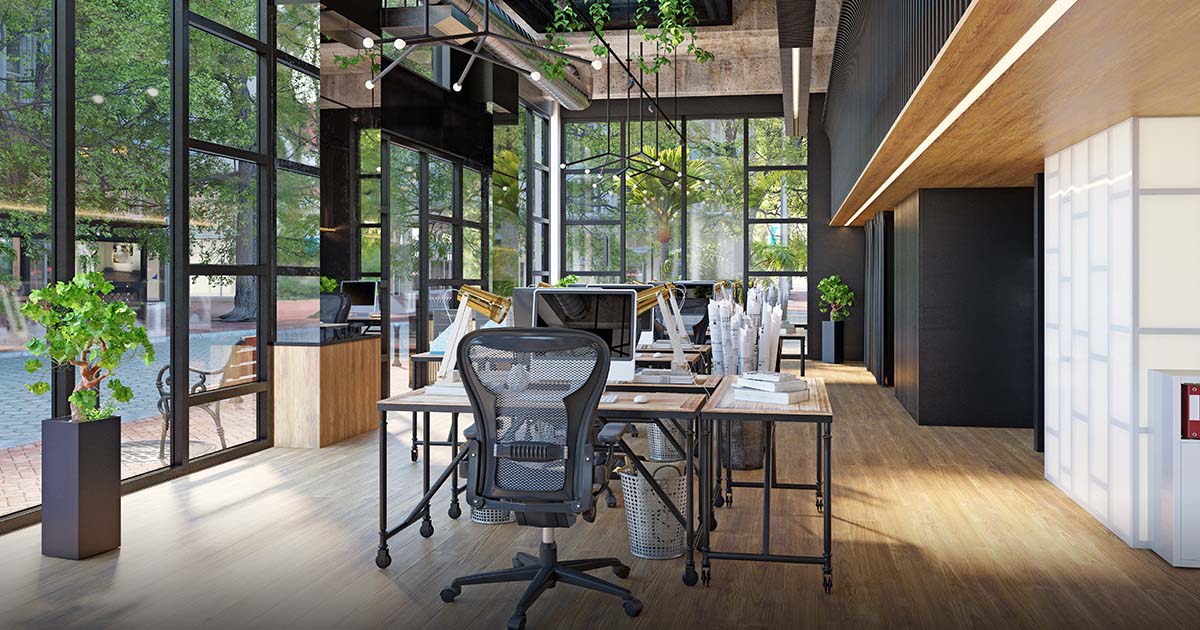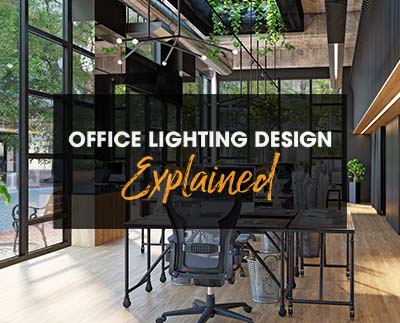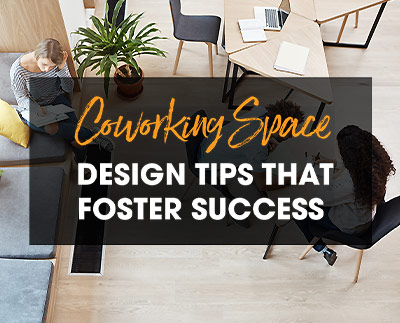
Office lighting has a bigger impact on employee mood, health and productivity than you may think. It’s an important aspect of office design, one that might sometimes be overlooked or considered as an afterthought.
This article covers the effects of poor office lighting design on employees, artificial light vs. natural daylight, circadian lighting, color temperature, and more. It will help you make more informed decisions when it comes to selecting lighting options for your clients, which will prove just how dedicated you are to their business’s success thanks to strategic design choices.
Office Lighting Design Explained
Negative effects of bad office lighting
Lighting is one of the most influential factors in the office environment. And if an office is designed with poor lighting choices, it can seriously affect employee well-being and performance.
Negative effects of bad lighting include:
- Eye strain that causes headaches
- Discomfort caused by burning sensations
- Drowsiness & lack of focus leading to decreased productivity
- Sleep disruptions that affect overall health
- Fatigue
Natural vs. artificial light
There is no question: the best type of lighting for human beings is natural daylight. That’s why it’s important to design an office that lets as much of the outside light in as possible. This can be achieved by introducing large windows wherever possible (especially where most workstations are location), adding transom windows on top of existing ones, or installing skylights.
Benefits of natural daylight in the office include:
- Reduced eye strain (fewer headaches)
- Improved mood
- Fewer mistakes made
- More energy
- Energy efficient (eco)
If adding windows isn’t an option, opt for artificial light that mimics natural light. Choose light systems that have tunable white lighting (more on that later) and automatic dimming options. You can also choose task lighting vs. overhead fluorescent lights, which are proven to be a nuisance.
Other ways of improving employee productivity include biophilic design and creating an outdoor office space for workers.
Circadian rhythm
If you’ve ever heard of the circadian rhythm, then you’re familiar with the idea that our bodies run on an internal 24-hour clock that correlates with one earth day. It more or less dictates when we will wake up and when we will go to sleep.
Our circadian rhythm can be interrupted by a set of environmental factors, including–you guessed it–artificial lighting and the infamous “blue light” emitted by computer screens. Lucky enough, human engineering has found a workaround that can help readjust our circadian rhythms—it’s called circadian lighting.
Circadian lighting
Circadian lighting is as close to natural daylight as we can (currently) get. This kind of lighting can be achieved by installing a tunable white lighting system that automatically changes the color temperature and intensity throughout the day, mimicking the sun’s cycle.
Tunable white lighting by time of day*:

- Morning – 3500-4500K
- Noon – 5500-6500K
- Afternoon – 3500-4500K
- Sunset – <2000K
*In Kelvins
You can discuss your office lighting design plans that include a circadian lighting system with your client, telling them all about the many benefits it will offer their employees. From alertness to increased productivity to improved overall mood, it will give them something to really think about, and it’ll show them that you have the company’s best interest at heart.
Office light positioning
You can have your office lighting sources picked out, but if the positioning of the lights is off, it will all be for naught. Study the floor plan and layout you’ve meticulously planned out in your office design software and strategically place each light source for best results.
Quick tips for office light positioning:
- Large light sources should not be placed directly above the employees’ desks
- Consider task lighting on desks for late-night workers
- Natural light should be in front of, or next to, work surfaces and computer screens to avoid direct glare (also consider using solar shades to diffuse the sunlight if it gets too bright/hot)
Bonus tip: Choose matte paint to avoid reflected glare.
Share this Post




